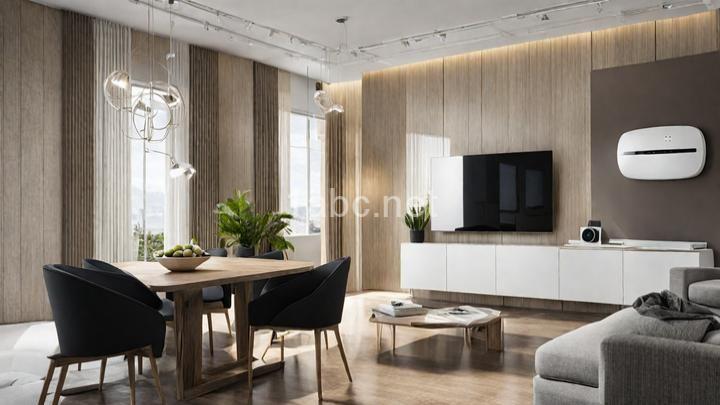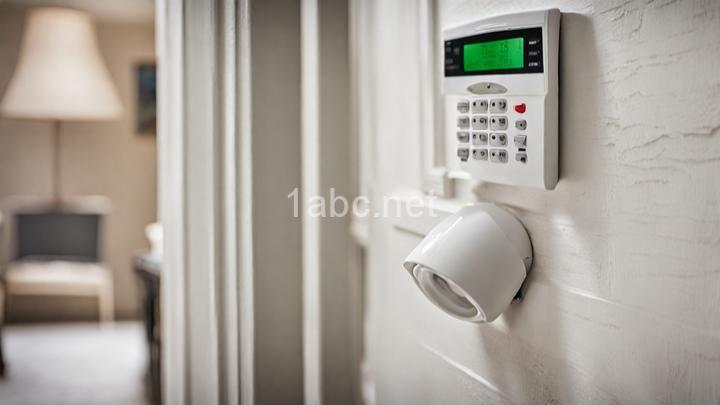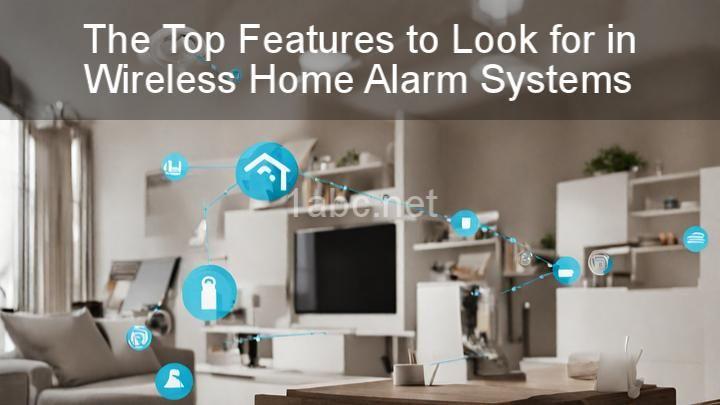Securing Your Home: A Comprehensive Guide to Home Alarm Systems

Introduction:
Welcome to our comprehensive guide on securing your home with alarm systems! In today's world, ensuring the safety and security of our homes has become more important than ever. With the increase in burglary rates, it is crucial to have effective alarm systems in place to protect our loved ones and precious belongings. In this blog post, we will walk you through everything you need to know about home alarm systems, from understanding how they work to choosing the right one for your needs, and even installing and troubleshooting them. So, grab a cup of coffee, get comfortable, and let's dive in!
I. Understanding Home Alarm Systems
A. What is a home alarm system?
A home alarm system is a security system designed to protect your home from unauthorized access. It consists of a network of sensors, a control panel, and a keypad that work together to detect and respond to potential threats. The primary purpose of a home alarm system is to alert you and the authorities if someone tries to break into your home, giving you peace of mind and deterring burglars from targeting your property.
B. How do home alarm systems work?
Home alarm systems work by using a combination of sensors, a control panel, and a keypad. Sensors, such as window and door sensors, motion detectors, and glass break sensors, are strategically placed around your home to detect any suspicious activity. When a sensor is triggered, it sends a signal to the control panel, which then activates the alarm and notifies the monitoring center or sounds an audible alarm. The keypad allows you to arm and disarm the system, as well as control various features.
C. Different types of home alarm systems
There are different types of home alarm systems available in the market, each with its own set of features and advantages. The two main types are wireless and wired systems. Wireless systems use radio frequency technology to communicate between the sensors and the control panel, making them easy to install and expand. On the other hand, wired systems require physical wiring to connect the sensors to the control panel, offering a more reliable connection. Additionally, home alarm systems can vary in terms of basic and advanced features, such as video surveillance, remote access, and home automation integration. It's important to consider your specific security needs and budget when choosing the right system for your home.
II. Choosing the Right Home Alarm System
A. Assessing your security needs
Before purchasing a home alarm system, it's essential to assess your security needs. Factors such as the size of your property, the neighborhood you live in, and your lifestyle play a significant role in determining the level of security required. Conducting a security audit can help identify vulnerable areas and potential risks. For example, if you have a large property with multiple entry points, you may need more sensors and surveillance cameras.
B. Researching alarm system providers
When it comes to home security, it's crucial to choose a reputable alarm system provider. Look for companies with a proven track record in the industry and positive customer reviews. Ask for recommendations from friends and family, or consult online forums and review websites. It's also a good idea to check if the provider is licensed and certified by relevant authorities.
C. Comparing features and pricing
Once you have a shortlist of alarm system providers, it's time to compare their features and pricing. Look for must-have features such as 24/7 monitoring, smartphone alerts, and remote access. Consider whether they offer different pricing plans, contract lengths, and warranty options. It's important to find a system that fits your budget without compromising on the level of security you need.
III. Installing and Setting Up Your Home Alarm System
A. Planning the installation process
Before installing your home alarm system, you need to decide whether you want to do it yourself or hire a professional. DIY installation can save you money but requires more time and effort. Professional installation ensures proper placement and configuration of the sensors but comes at an additional cost. Consider your skills, time availability, and comfort level with technology when making this decision. Additionally, planning the sensor placement is crucial for maximizing the system's effectiveness. Place sensors on all entry points, including doors, windows, and garage doors, as well as in high-traffic areas like hallways and living rooms.
B. Installation step-by-step guide
If you decide to go the DIY route, here is a step-by-step guide to installing your home alarm system:
- Gather the necessary tools and equipment, such as a ladder, drill, and screwdriver.
- Start by mounting the control panel in a central location, preferably near the main entrance.
- Install the sensors on doors and windows according to the manufacturer's instructions.
- Connect the sensors to the control panel using the provided wiring or follow the wireless pairing process.
- Test each sensor to ensure proper functioning and communication with the control panel.
C. Setting up your control panel
Once the physical installation is complete, it's time to set up your control panel. This involves programming codes, setting user preferences, and customizing features according to your needs. Follow the instructions provided by the manufacturer to navigate through the control panel's menu options and make the necessary adjustments. Once everything is set up, test the system thoroughly to ensure it is working correctly and responding to triggers as expected.
IV. Maximizing Home Security with Additional Measures
A. Enhancing your alarm system with home automation
While a home alarm system provides a crucial layer of security, you can further enhance it by integrating home automation features. Home automation allows you to control various aspects of your home, such as lighting, door locks, and surveillance cameras, remotely. By integrating these devices into your alarm system, you can receive real-time alerts and have more control over your home's security. For example, you can set up motion-activated lights or remotely lock/unlock your doors using your smartphone.
B. Establishing good security habits
In addition to having a robust alarm system, it's important to establish good security habits to protect your home. Simple measures such as locking doors and windows when you leave, avoiding sharing sensitive information online, and keeping your property well-lit can go a long way in deterring potential burglars. Consider installing outdoor cameras and motion sensor lights to further enhance your security.
V. Maintaining and Troubleshooting Your Home Alarm System
A. Regular maintenance routines
To ensure the optimal performance of your home alarm system, regular maintenance is essential. This includes cleaning sensors to remove dust and debris, checking batteries regularly, and scheduling professional inspections. Clean the sensors using a soft cloth or brush, and replace batteries as needed to prevent any malfunctions. It's also advisable to have a professional inspect your system annually to identify any potential issues and make necessary repairs or upgrades.
B. Common troubleshooting issues and solutions
Even with regular maintenance, you may encounter some common issues with your home alarm system. Here are a few troubleshooting tips:
- If the alarm keeps triggering false alarms, check for any loose sensors or obstructions that may be causing the sensors to activate incorrectly.
- If the control panel is not responding, check the power supply and ensure it is properly connected.
- If you are experiencing connectivity issues, try resetting the control panel and re-pairing the sensors.
- If the alarm system fails to sound during a break-in, check the batteries in the sensors and ensure they are not expired or low.
Conclusion:
Securing your home with a reliable alarm system is an investment in the safety and well-being of your family. In this comprehensive guide, we have covered everything you need to know about home alarm systems, from understanding their components and working principles to choosing the right one for your needs, installing and setting it up, and maintaining and troubleshooting it. By following the tips and guidelines provided, you can take proactive steps to protect your home and loved ones. Remember, the key to effective home security is a combination of a robust alarm system, good security habits, and additional measures like home automation. Stay safe, and don't hesitate to reach out if you have any further questions or need assistance.
FREQUENTLY ASKED QUESTIONS
What is the purpose of a home alarm system?
The purpose of a home alarm system is to provide security and protection for your home and its occupants. It acts as a deterrent to potential intruders and can help to alert you and authorities of any unauthorized entry or suspicious activity. A home alarm system typically includes various components such as door and window sensors, motion detectors, and a control panel. When triggered, the alarm system will sound an audible alarm and may also send a notification to a monitoring center, who can then dispatch the necessary help if needed. In addition to deterring burglars, a home alarm system can also provide peace of mind, knowing that your home is being monitored and protected. It allows you to feel safer and more secure in your own space. So, the purpose of a home alarm system is ultimately to safeguard your home and your loved ones from potential threats and provide you with a sense of security.
How does a home alarm system work?
A home alarm system works by utilizing various components to detect and deter potential intruders. These components typically include sensors, control panels, and communication devices.The sensors are strategically placed around the home and are designed to detect any unauthorized entry or movement. There are different types of sensors, such as door/window sensors, motion sensors, glass break sensors, and smoke/heat detectors. When a sensor is triggered, it sends a signal to the control panel.
The control panel is the central hub of the alarm system. It receives signals from the sensors and processes the information. If a sensor is triggered, the control panel activates the alarm and initiates a response. This response can include sounding a loud siren or strobe lights to alert the occupants and scare off intruders.
In addition to the alarm functions, modern home alarm systems also have the ability to communicate with monitoring centers or the homeowner's smartphone. Communication devices, such as cellular or landline connections, are used to send alerts and notifications in case of an alarm event. This allows for immediate action to be taken, such as contacting authorities or checking the premises remotely.
Overall, a home alarm system works by using sensors to detect potential threats, a control panel to process the signals, and communication devices to alert the homeowner or monitoring center. This multi-layered approach helps to provide a sense of security and peace of mind for homeowners.
What types of sensors are commonly used in home alarm systems?
In home alarm systems, several types of sensors are commonly used to detect and respond to potential threats. These sensors play a crucial role in ensuring the security and safety of your home. Here are some of the most commonly used sensors in home alarm systems:
-
Motion Sensors: These sensors detect movement within a specific area and are typically placed in hallways, entryways, and other areas where an intruder might pass through. They can be programmed to trigger an alarm or activate surveillance cameras when motion is detected.
-
Door and Window Sensors: These sensors are designed to detect when a door or window is opened or closed. They consist of two parts: a magnet and a sensor. When the door or window is opened, the magnet moves away from the sensor, triggering an alarm.
-
Glass Break Sensors: Glass break sensors are designed to detect the sound frequency produced when glass is broken. They are typically placed near windows or glass doors and can trigger an alarm when the sound of breaking glass is detected.
-
Smoke Detectors: Smoke detectors are essential for home safety and are often integrated into home alarm systems. They detect smoke particles in the air and can alert you to a potential fire, allowing you to take immediate action.
-
Carbon Monoxide Detectors: Carbon monoxide (CO) detectors are used to detect the presence of this odorless and potentially deadly gas. They are typically placed near fuel-burning appliances and can trigger an alarm if dangerous levels of CO are detected.
-
Flood Sensors: Flood sensors are designed to detect water leakage or flooding in areas such as basements, laundry rooms, and bathrooms. When water is detected, these sensors can trigger an alarm, alerting you to potential water damage.
-
Temperature Sensors: Temperature sensors can be used to monitor the temperature in your home. They can detect extreme heat or cold, helping to prevent issues such as frozen pipes or fire hazards.
These are just a few examples of the types of sensors commonly used in home alarm systems. The specific sensors used can vary depending on the level of security you require and the layout of your home. It's important to choose the right combination of sensors to ensure comprehensive coverage and peace of mind.
Do I need professional installation for a home alarm system?
Whether or not you need professional installation for a home alarm system depends on various factors. While some alarm systems can be self-installed, others may require professional assistance to ensure proper installation and functionality. If you have a basic DIY-friendly alarm system, it may come with easy-to-follow instructions that allow you to set it up yourself. These systems typically involve wireless sensors and components that can be easily mounted or placed around your home. However, it's important to note that even with a DIY system, you may still need to contact your alarm monitoring service provider to activate the system and ensure it is properly connected to their monitoring center.
On the other hand, more complex alarm systems, especially those that are hardwired or integrated with other smart home devices, may require the expertise of a professional installer. These systems often involve running wires through walls, setting up control panels, and configuring the system to work seamlessly with your home's infrastructure. Professional installers have the knowledge and experience to handle these installations efficiently and effectively.
Additionally, professional installation can provide you with peace of mind knowing that the system has been installed correctly and is functioning optimally. Installers can also provide guidance on the best placement of sensors and detectors to maximize the system's effectiveness.
Ultimately, the decision to opt for professional installation depends on your comfort level with DIY projects, the complexity of the system you choose, and your desire for a hassle-free installation process. It's always a good idea to consult with the alarm system provider or a professional installer to determine the best course of action for your specific needs.



